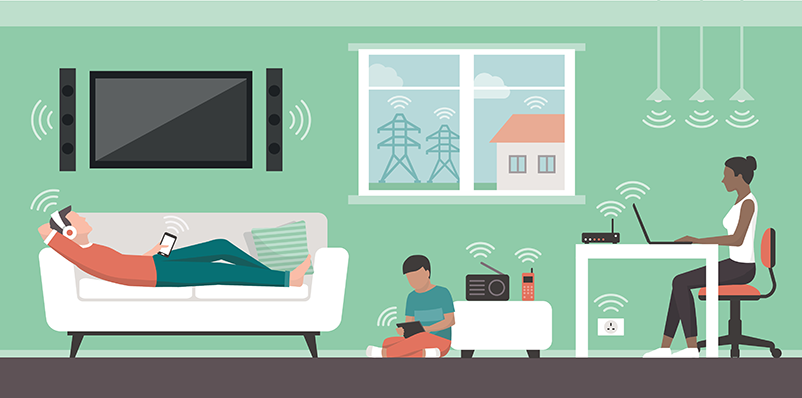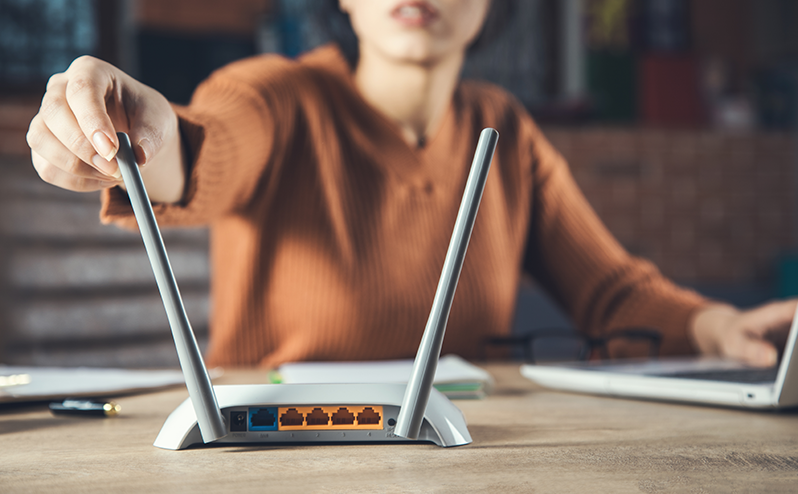Top 10 Ways to Boost Your Wi-Fi Signal at Home
The entire Lorex lineup of security systems, IP and Wi-Fi cameras, along with our apps, rely on the internet for live viewing and playback. If you have other smart devices at home, there’s a great likelihood that you’ll overload your internet bandwidth allowance. Overloading will ultimately result in Wi-Fi hiccups.

The following are ten ways to boost your Wi-Fi signal at home and make sure that all your smart devices – including your Lorex devices – are covered.
1. Check your connection; if it’s slow, upgrade to a better plan.
Before you start pointing fingers, it’s best to revisit and evaluate your internet plan. If you have subscribed to a snail’s pace connection with a limit of 5-9 devices at a time, then it may be best to upgrade to higher bandwidth, so all your 15 smart devices are covered.
If you have subscribed to a speedy connection that can accommodate 15 or more smart devices at a time but still having Wi-Fi hiccups, it may be time to contact your ISP provider and ask for a router replacement.
2. Find the right spot for your router; note the word “find.”
Finding the right spot for your router is not easy because it requires planning, modification, and may even involve running wires.
But generally, your goal is to find a central spot in your home where the Wi-Fi signal can be dispersed evenly. Do not hide your router inside a cabinet because walls or any obstruction will weaken its performance.
Your best bet is to find an open space away from walls and obstructions.
3. Update the firmware of your router or replace your vintage unit with the next-gen Wi-Fi 6 router.

There are two critical reasons why you must upgrade the obsolete firmware on your router: patch any security vulnerabilities and boost your Wi-Fi speed.
The sad thing about old routers is that they may cap at relatively low bandwidths. In fact, they even have shorter ranges which run afoul with the concept of Wi-Fi being wireless.
4. If your router uses an internal antenna, you may want to add an external one to boost your Wi-Fi signal.

There are two types of external antenna: omnidirectional and directional. If you want to boost your Wi-Fi signal and cover the entirety of your property, an omnidirectional antenna is a perfect choice.
However, if you are experiencing weak spots in your network, a directional antenna is almost always the best choice, as it can shoot up your coverage practically instantly.
5. Invest in a good range extender or replace your aging router with a mesh Wi-Fi system.
A range extender is just that—an extender (or rebroadcasting) of your existing Wi-Fi signal. It may or may not work, especially if you have a large property to cover.
A mesh Wi-Fi system, on the other hand, replaces your existing router and blankets your entire property with a powerful Wi-Fi signal. Though a mesh system is significantly expensive, yet it does the job so well you don’t need anything else.
6. Try switching to a different channel.
Interference is a common issue in densely populated areas where signals from other wireless networks, cordless phone systems, microwaves, and other devices impact the speed of your Wi-Fi network.
Most routers will automatically change to less crowded channels for you. If your router does not support this, you will have to change the channel manually by going to your router’s administrator setting.
7. Group your devices to different frequencies (2.4GHz vs. 5GHz).

The most common frequency—2.4GHz band—can travel to a considerable distance but may become weak as it travels far. On the other hand, the less common frequency—5GHZ band—can only travel a short distance, but it’s inherently stronger.
With this in mind, try grouping your devices to different frequencies (2.4GHz or 5GHz).
Standalone cameras that connect to your Wi-Fi network are better off with 2.4GHz, especially if you are installing them in far away from your router (e.g., front doors, backyards, or separated property).
8. Know every device on your network and cut off Wi-Fi leeches.
For peace of mind, it’s always to good to know every device that connects to your network. Knowing each device by name or IP address will make it easier for you to spot Wi-Fi leeches or intruders and cut them off of your network.
9. Control bandwidth-hungry applications or devices.
Most modern routers come with Quality of Service (QoS) tools that control the amount of bandwidth an app or client use.
If you are having connectivity issues surrounding your Lorex devices, please make sure to configure your QoS tools, so your security devices receive the right amount of bandwidth at all times.
10. Reboot

In most cases, a slow internet connection can quickly be remedied by simply rebooting your router. A reboot can clear your router’s memory and allow updates to install.
As all Lorex devices and apps rely on the internet to connect with you, a reliable and strong Wi-Fi network at home is non-negotiable.